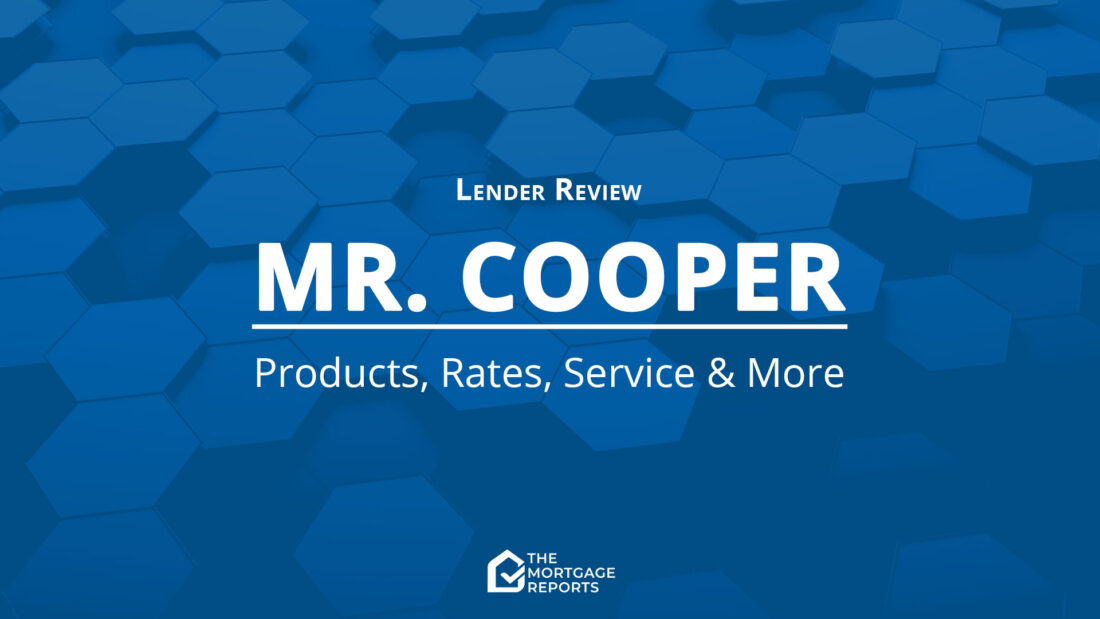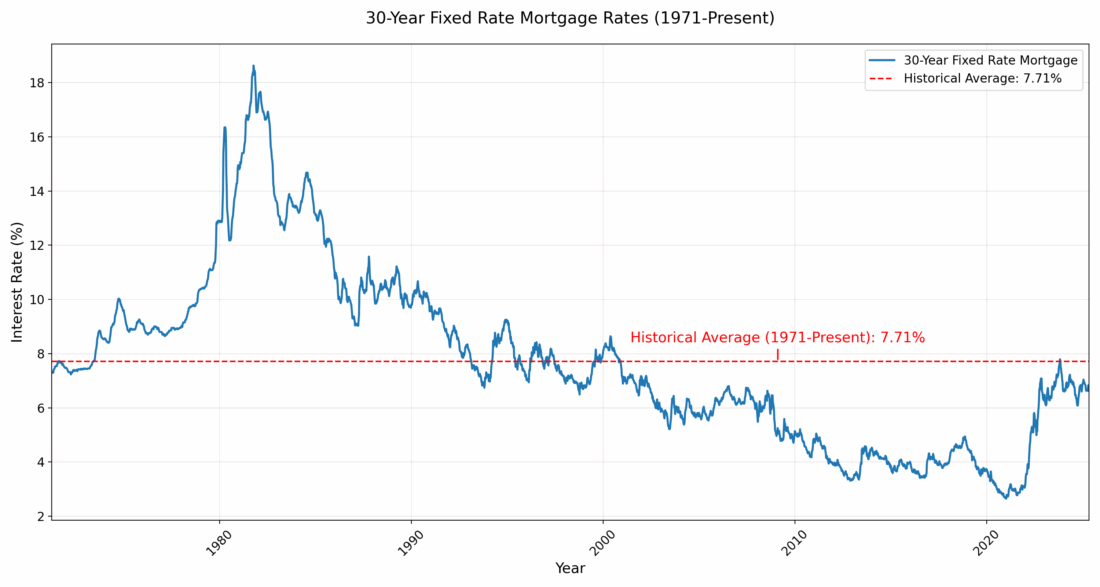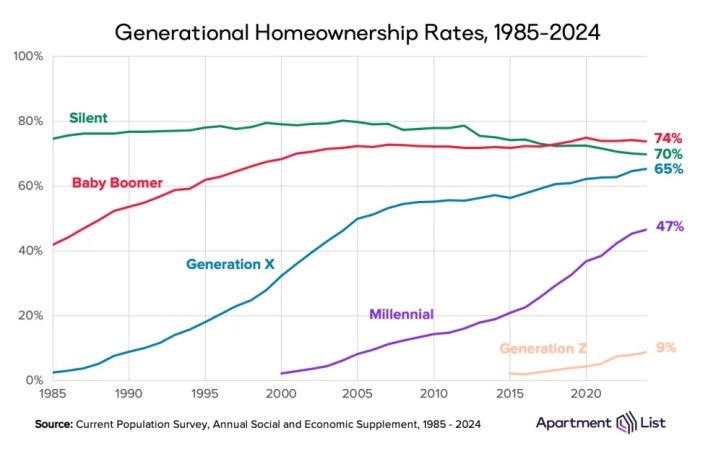ATTOM’s Q1 2025 U.S. Residential Property Mortgage Origination Report shows that 1.4 million mortgages were issued for residential properties (1 to 4 units) nationwide during the first quarter of the year — a 14 percent drop from the previous quarter, continuing a downward trend in loan activity. WATCH: ATTOM #FiguresFriday – Top 10 U.S. Metros with Refinance Mortgage Originations on the Rise in Q1 2025 According to the report, after peaking at nearly 4.2 million loans per quarter in early 2021, new home financing activity has fallen below pre-pandemic levels. The latest decline was fueled by a 20 percent drop in purchase loans, which fell from 738,675 in Q4 2024 to 593,111 in Q1 2025. Also, according to ATTOM’s latest report, residential refinance activity dropped 12 percent from the previous quarter to 580,170 loans, while home equity lines of credit declined 5 percent to 260,267. ATTOM’s Q1 2025 mortgage origination …
CrossCountry Mortgage Review for 2025: Rates, Loan Options and Customer Feedback
Pros and cons of CrossCountry Mortgage CrossCountry Pros: Offers loan programs for first-time buyers and borrowers with non-traditional credit. Provides closing cost and down payment assistance programs. Closes loans in an average of 21 days. Does not charge a rate lock fee. Accepts alternative forms of credit history. CrossCountry Cons: Higher-than-average origination fees. Mortgage rates are not as competitive as other lenders. Does not publish mortgage rates online. Limited online home-buying tools and resources. Poor customer reviews on TrustPilot. CrossCountry Mortgage rates CrossCountry Mortgage interest rates can be higher than its competitors, according to data from the Home Mortgage Disclosure Act (HMDA). The lender doesn’t publish its mortgage rates online, which means you must speak with a loan officer to get a rate quote. However, we used HMDA data to calculate the average interest rates borrowers paid CrossCounty Mortgage, and here’s what you can expect in 2025. Loan Type Average …
Mortgage Rates to Reverse Recent Decline as Unemployment Holds Steady
The official May jobs report remained strong on the surface and mortgage rates will reverse a decline from recent days following a weak ADP employment report earlier this week. Under the hood, however, there are clear warning signs in this report, even though the labor market has generally held up better than expected under high tariffs. A surprisingly weak ADP jobs report on Wednesday drove a fall in mortgage rates, but the official May jobs report came in slightly stronger than consensus, which means mortgage rates are likely to reverse the earlier decline. There were 139,000 jobs created in May, slightly lower than last month’s gain of 147,000 jobs, but higher than the 130,000 expected. The unemployment rate increased only marginally from 4.19% to 4.24%. On the surface, the labor market is healthy so far, despite tariff volatility. Because immigration has declined so much over the past two years, the …
Newrez Mortgage Review for 2025: Rates, Loan Options and Customer Feedback
Pros and cons of Newrez Newrez Pros: Can close loans in as few as 10 days. Option for 1% down on a conventional loan with up to $5,000 in down payment assistance. Works with bad credit borrowers, including foreclosure and bankruptcy. Offers mortgages for self-employed borrowers. Lends in all 50 states, plus Washington DC, Guam, Puerto Rico, and the US Virgin Islands. Newrez Cons: You must contact the lender directly to get a rate quote. Average origination fee is higher than the national average. Interest rates are not as competitive as some lenders. High number of complaints with the CFPB. There is no live online chat for customer support. Newrez mortgage rates Newrez interest rates tend to be higher than the national average, based on data from the Home Mortgage Disclosure Act (HMDA). This trend is likely due to the lender working with borrowers who have poor credit. While Newrez …
Mr. Cooper Mortgage Review for 2025: Rates, Loan Options and Customer Feedback
Pros and cons of Mr. Cooper Mr. Cooper Pros: Available in all 50 states, plus Puerto Rico and the U.S. Virgin Islands Wide range of loan types, including options for self-employed borrowers Preapproval lasts up to 120 days, which is longer than most lenders Incentive programs may help lower your rate or reduce closing costs Offers a close-on-time guarantee Mr. Cooper Cons: Origination fees tend to be higher than other lenders No physical branches for in-person support Requires you to submit personal details to view rate quotes Legal issues and customer complaints in recent years Does not offer USDA loans Mr. Cooper mortgage rates Borrowers who get a mortgage through Mr. Cooper often pay more in interest compared to other lenders, according to data from the Home Mortgage Disclosure Act (HMDA). Since Mr. Cooper doesn’t list rates publicly, you’ll need to speak with a loan officer to see what terms …
Mortgage Rate History | Chart & Trends Over Time 2025
Trends in historical mortgage rates After years of rising home prices and elevated mortgage rates, the first half of 2025 has shown cautious optimism. While it may not mark a dramatic turning point, it could be a step toward more stable footing. The big question now: Will rates come down meaningfully, or are we in for a longer period of high borrowing costs? Mortgage rates have remained essentially flat since the start of the year—down just 6 basis points—with analysts expecting only gradual movement in the months ahead. With the Federal Reserve holding rates steady and remaining cautious about inflation, any future cuts are likely to be measured. For now, buyers and homeowners are watching closely, hoping for affordability gains, but preparing for a slower pace of change. But here’s what many overlook: The average rate is just that—an average. If you have strong credit and a solid financial profile, …
Apartment List’s Millennial Homeownership Report – 2025
A recent report form Apartment List says Millennials represent the largest generation in the U.S. and are primary actors in the housing market. Citing Census data, their report says Millennials are buying more homes today than any other generation. However, on a per-capita basis, their homeownership rate has been growing slower than that of previous generations. Today millennials represent the largest generation in the United States, and spanning the ages of 29-44 they are primary actors in the housing market. They are the age their parents were when they settled down, started families, and bought homes; however, today’s affordability climate is vastly different and for many Millennials the “American Dream” is no longer synonymous with homeownership. Click here to read the full report at Apartment List. The post Apartment List’s Millennial Homeownership Report – 2025 appeared first on Real Estate Investing Today.
Decline in Mortgages for Home Purchases Drives Broader Drop in Home Loan Market
Number of mortgages down 14 percent in first quarter of 2025; Mortgage refinancing deals gaining greater share of the market IRVINE, Calif. – June 5, 2025 — ATTOM, a leading curator of land, property data, and real estate analytics, today released its first-quarter 2025 U.S. Residential Property Mortgage Origination Report, which shows that 1.4 million mortgages were secured by residential property (1 to 4 units) in the United States during the first quarter of the year. That was a 14 percent decrease from the previous quarter, as the number of new loans continues to trend downward. After hitting a recent peak of nearly 4.2 million loans a quarter in early 2021, the number of new home financing deals has declined to below pre-pandemic levels. The latest dip was driven by a 20 percent fall off in home purchase loans, which slipped from 738,675 in the fourth quarter of 2024 to 593,111 in the …
Top 10 Counties with the Highest Zombie Foreclosure Rates in Q2 2025
According to ATTOM’s newly released Q2 2025 Vacant Property and Zombie Foreclosure Report, approximately 1.4 million (1,382,480) residential properties—representing about 1.3 percent of all U.S. homes—are currently vacant. This marks the 13th straight quarter the national vacancy rate has remained steady at 1.3 percent. WATCH: ATTOM #FiguresFriday – Top 10 U.S. Counties with the Highest Zombie Foreclosure Rates in Q2 2025 ATTOM’s latest vacant properties analysis also shows that 222,358 properties were in the foreclosure process in Q2 2025—an increase of 4.8 percent from the previous quarter but a 6.3 percent decline from a year ago. This uptick follows five consecutive quarters of declining foreclosure activity. The report notes that in the second quarter of 2025, 7,329 pre-foreclosure properties—3.3 percent—were classified as “zombie” homes, meaning they were vacant and abandoned by owners during the foreclosure process. This share remains nearly unchanged from Q1 2025 but is up slightly from 2.9 …
Mission Loans Mortgage Review for 2025: Rates, Loan Options and Customer Feedback
Pros and cons of Mission Loans Mission Loans Pros: Provides conventional, FHA, VA, jumbo, and bank statement loans. Offers low down payment choices. Maintains high customer satisfaction ratings on Google. Features an entirely online application process. Includes a pre-approval tool to help estimate budget. Mission Loans Cons: Origination fees are much higher than the national average. Mortgage rates trend higher than other lenders. Does not publish interest rates on its website. Does not offer USDA loans for rural buyers. Few branch locations limit in-person service. Mission Loans mortgage rates Mission Loans interest rates often trend higher than the national average. The lender does not publish rates on its website, so you need to speak with a loan officer or apply online to get a personalized quote. We used HDMA Act data to calculate average interest rates for Mission Loans’ most common loan types. The table below shows the averages you …










